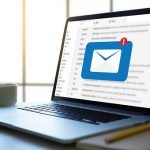Introduction
Email newsletters are one of the best tools for building relationships with your audience. They’re direct, personal, and cost-effective.
But creating one isn’t just about typing out a message and hitting send—it takes strategy, design, and thoughtfulness to make it stand out.
This guide will walk you through how to create a professional email newsletter step by step. From picking the right platform to crafting the content and analyzing results, I’ll make sure you’re equipped to deliver emails that people want to read.
What Makes a Great Email Newsletter?
A great email newsletter grabs attention right from the subject line, offers value to the reader, and looks clean and professional. Here are the key ingredients:
- Relevance: Your newsletter should address what your readers care about most.
- Consistency: Regular emails help maintain a strong connection.
- Design: A visually appealing layout makes the content easy to read and more engaging.
- Clear Call-to-Action (CTA): What do you want your readers to do? Make it clear and easy for them to follow through.
How Do I Create a Professional Email Newsletter?
Step 1: Define Your Goals
Before diving in, figure out why you’re sending a newsletter.
- Are you sharing updates?
- Promoting products or services?
- Driving traffic to your website?
Clearly defining your goals will shape your content and design choices. For instance, if you’re promoting a product, you might want to include discounts or new arrivals. If it’s about driving traffic, you’ll need compelling links and teasers.
Step 2: Build a Strong Email List
An email list is the backbone of any successful newsletter. Make sure your subscribers have willingly signed up—this improves engagement and ensures you comply with email marketing laws like GDPR or CAN-SPAM.
Ways to Grow Your List:
- Add signup forms on your website or blog.
- Offer incentives like a free guide or discount.
- Include a call-to-action on your social media profiles.
Step 3: Choose the Right Platform
There are many email marketing platforms to choose from, such as:
- Mailchimp: Great for beginners with easy-to-use templates.
- Constant Contact: Offers robust features for small businesses.
- ConvertKit: Perfect for content creators.
- HubSpot: Ideal for larger businesses that need advanced tools.
Look for features like drag-and-drop editors, analytics, and automation capabilities. Choose one that matches your needs and budget.
Step 4: Craft Engaging Content
Your content is what keeps people from opening your emails. Here are some tips:
- Write a Killer Subject Line: Short, specific, and intriguing. Example: “5 Ways to Boost Your Productivity This Week.”
- Personalize Your Message: Use the recipient’s name or tailor the email based on their preferences.
- Provide Value: Share tips, exclusive content, or updates that matter to your audience.
A simple structure could look like this:
- Header: Highlight your main topic.
- Body: Share detailed information or stories.
- CTA: Tell readers what to do next—shop, read more, sign up, etc.
Step 5: Design for Impact
The look of your newsletter matters as much as the words. Use templates or create a layout that’s:
- Mobile-Friendly: Over 60% of emails are opened on mobile devices.
- Simple and Clean: Too many images or colours can be distracting.
- Aligned with Your Brand: Use your brand colours, fonts, and logo.
Step 6: Test and Optimize
Before sending, check everything:
- Spelling and grammar.
- Links (make sure they work).
- Design preview on both desktop and mobile.
After sending, track performance with metrics like:
- Open Rate: The percentage of recipients who opened your email.
- Click-Through Rate (CTR): How many people clicked on links in your email?
- Unsubscribe Rate: If it’s high, rethink your content strategy.
Step 7: Automate and Schedule
Email automation saves time and ensures timely delivery. You can set up:
- Welcome Emails: Sent automatically when someone subscribes.
- Abandoned Cart Emails: Remind users of items left in their cart.
- Regular Updates: Schedule newsletters to go out weekly or monthly.
FAQs
1. How often should I send newsletters?
It depends on your audience. For most businesses, once a week or once a month works well. Too frequent, and people might unsubscribe; too rare, and they might forget you.
2. What’s the best time to send newsletters?
Studies show that Tuesday mornings around 10 AM often work well, but it varies depending on your audience. Experiment to find the sweet spot.
3. What should I avoid in email newsletters?
Avoid overly promotional content, long blocks of text, and clickbait subject lines. They can turn readers off and lead to higher unsubscribe rates.
Conclusion
Creating a professional email newsletter takes effort, but the rewards are worth it. A good newsletter keeps your audience engaged, drives results, and builds trust over time. Start small, test what works, and improve as you go.
What’s one thing you’d love to achieve with your email newsletter?





GIPHY App Key not set. Please check settings